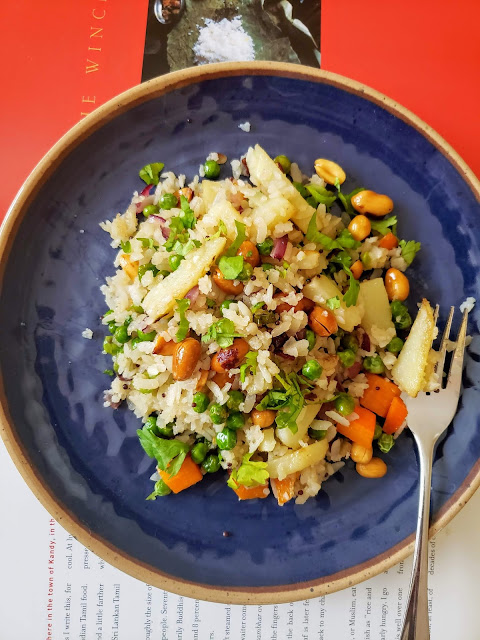Definition of "Bossy" according LS with real life example -- "Bossy maane....bossy maane. Ei je dhoro tomar ei room ta clean korar kotha. Kintu tmi korcho na. Ar tumi amake bolcho clean korte jate tumi araam kore cha khete paro. Tar mane tumi Bossy."
She says, "Bossy means...well bossy means. Ok, lets take you. It is your job to clean this room(at this point she looks at me pointedly). But, you don't do it. Instead you tell me to do it so that you can sit and drink your tea. That means you are being bossy".
Point noted.
Everyone knows that a Bong loves his or her Begun Bhaja. Slices of purple eggplant, tossed in turmeric powder and salt and then shallow fried in hot oil. With a good quality eggplant, the flesh of the fried being is so soft that it is not wrong to call it "buttery". Growing up, the begun bhaja was a standard side with dal and rice and a fish curry in my and many Bengali's home. I never liked it nor did I spare any thought towards it. It was that one more bhaja served with dal.
Today, I do not make a begun bhaja all that often simply because I don't want to do the frying, an eggplant sucks up oil fast and is as much a gas guzzler as a Hummer H1. I would rather eat a begun pora than a bhaja, I claim.
And then a reader(
Then to get more experimental I dusted them with cajun seasoning and sprinkled some paprkia.
Next I wanted to rub them with cinnamon powder and nutmeg. But I restrained. This far and no further was the mandate. "Don't mess with my Begun Bhaja", was a familiar cry around home.Hah! tell me who is "Bossy" around here.
Traditionally the Begun Bhaja is fried. In Mustard Oil. As in this Begun Bhaja. In the oven version I used olive oil instead of Mustard but you can use the latter too.
Wash 1 slender japanese eggplant in water and pat dry
Chop the japanese eggplant in rounds, each 1/2" thick.
Toss the slices with
1 tsp turmeric powder
2 tsp Olive oil
salt
Grease a baking tray. Arrange the eggplant slices on the tray. No piling or overlapping.
If you have a cooking spray, spray the surface of the eggplant slices. Or else you can smear them with drops of olive oil.
Pop in an oven. I used a toaster oven where I baked them at 300F for about 30 mins. After 15 mins from start I turned the tray and sprayed the slices once more. Towards the end, I flipped the slices, sprayed with little more cooking spray and did it for 5 more minutes.
Oven temperature and timing will vary. The larger oven temp should be about 350F. Also depending on the quality of the eggplant timing will vary. Just check that the slices are not getting dry and take them out once they are soft and cooked. If they are getting dry but not cooked, cover the bake tray with a aluminum foil and then bake.
Sometimes I might brown them further on a greased fry pan on the stove after they are done but mostly that is not necessary for this variety of eggplant
Now that we have the begun bhaja out of the picture and you saw the simple psychology that made me happier to bake them as opposed to frying them, I will introduce you to Scott Haas, food writer and psychologist. Yes, a deadly combination.
In his newest book, Scott explores what goes on inside a chef's mind in the back of a professional kitchen. Intriguing, haan ? Wait and hear the rest. In the book, "Back of the House-- Secret Life of a restaurant" Haas looks at famed Boston restaurant Craigie on Main, where chef Tony Maws basically gave him free reign to observe for the past year and a half. If you want to know what inspires a chef, if you want a peek into the racing drama in a restaurant kitchen and want the drama to unfold like a novel, this book is for you.
Now available on Amazon
I have my own copy which I am not going to share but I would be very happy to send a copy of this book to one of the commenters in this post.. Winner will picked by random.org and book will be shipped in US only.





















